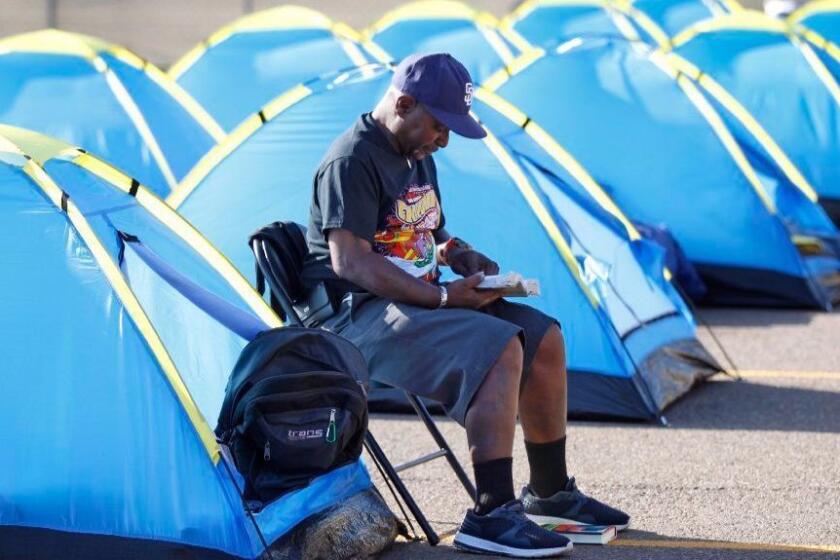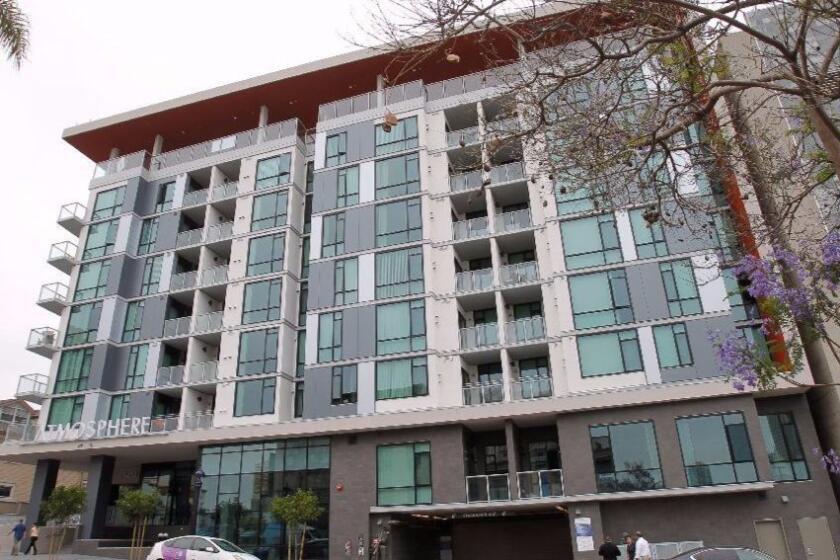Artist offers tiny homes from her installation to help homeless. No commitment from city.

At Horton Plaza Park the art project “Model Home” created and designed by Mimi Lien is hoisted up sixty eight feet by a crane and then slowly spun to music.
An artist who built six diminutive houses as part of an installation — and wanted to see them help with the city’s homelessness crisis — says she has been disappointed so far by the city response.
Mimi Lien, a Tony award-winning set designer and 2015 MacArthur “genius” grant recipient, built the dwellings for a weekend art placement at Horton Park Plaza. She was hoping the 8-by-8-foot units could then be used as shelters for those now living on the streets.
Lien on Friday said the homes are more likely to be broken down after the exhibit closes on Sunday. By Monday, she expects the homes will be handed over to a local theater school for use as stage props.
Lien said several San Diego officials had expressed interest in her offer to reuse the dwellings, but none had followed up on her proposal by Friday afternoon.
“It seems to me perhaps quite unlikely that we’ll work something out by Monday, when these have to go somewhere,” Lien said of her efforts to repurpose the homes. “But it’s only a few houses. I hope the impact, at this seemingly pivotal time, will be to catalyze (the city) to build more.”
Lien’s tiny homes — each painted bright red, with a trussed roof and fake chimney, reminiscent of a Monopoly game piece — attracted plenty of attention over their four-day run at the plaza, part of the La Jolla Playhouse’s Without Walls Festival.
Four times a day between Thursday and Sunday, a crane hoisted up one of the units, swinging it above the upturned heads of dozens of curious onlookers, both housed and homeless, for an aerial “crane ballet.”
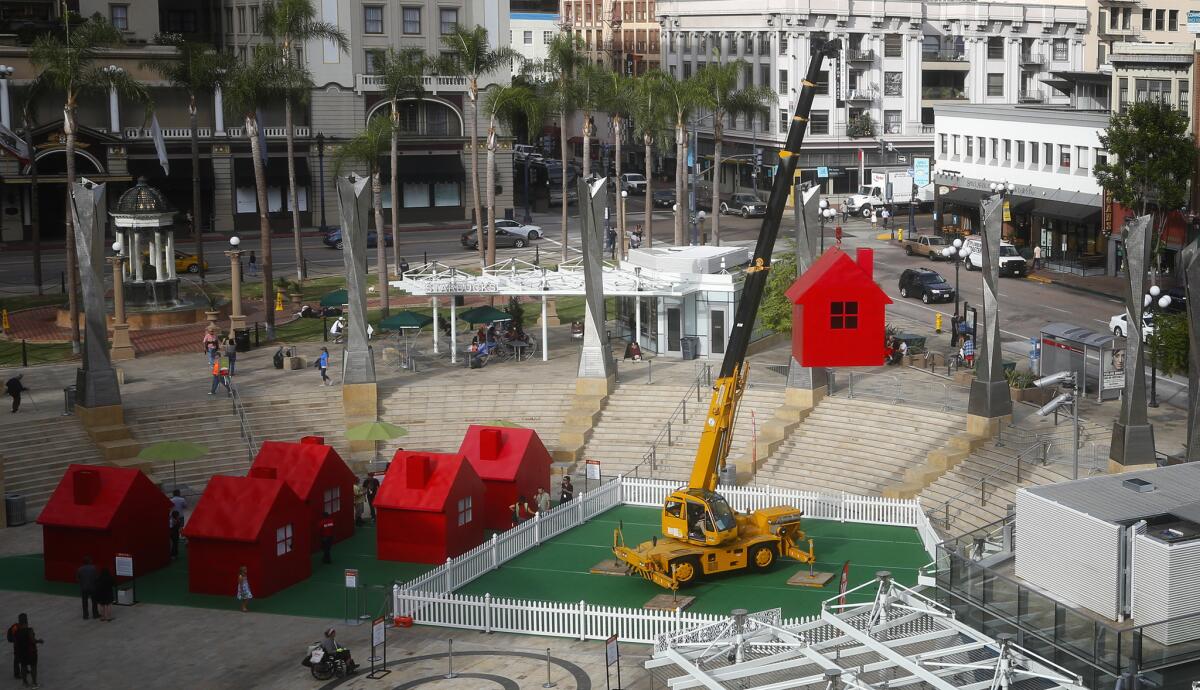
Lien’s decision to stage that dance at Horton Plaza, one of the few places downtown where homeless residents can access a public restroom, was no accident. The New York-based artist said she wanted the installation to sharpen the contrast she had witnessed in San Diego’s East Village, where construction cranes working on shimmering penthouses tower over the street-level squalor of homeless camps.
She wanted her art as close as possible to City Hall, where it had the highest chance of grabbing officials’ attention.
It worked. The exhibit — titled “Model Home” and sited roughly one block from City Hall — caught the eye of Councilwoman Georgette Gomez, who stopped by this week on her way back from lunch. Jonathan Herrera, Mayor Kevin Faulconer’s chief homeless adviser, also dropped in. Councilman Chris Ward chipped in by helping Lien research the project.
Lucas O’Connor, a spokesman for Ward, said Amikas, a nonprofit with tiny home plans of its own, told the councilman that Lien’s dwellings were unsuitable for use as a shelter. O’Connor said Ward did not challenge the nonprofit’s suitability assessment. He did not answer a question about whether Ward had pursued efforts to make the units suitable.
Jeeni Criscenzo, Amikas’s president, said her group offered to help Lien reuse the homes this past summer. But the San Diego-based nonprofit — which is working with the city to find its own site for a tiny home development — eventually bowed out, citing concerns over whether Lien’s dwellings would comply with city building codes.
Criscenzo said that decision was based solely on misgivings over the quality of the dwellings, which she said could not be upgraded to meet construction standards.
“There’s nobody offering competition to our sleeping cabins,” she said. “The building department is not going to find (Lien’s units) acceptable.
“These are stage props. … You can say it’s better than a tent, but tents aren’t acceptable either.”
Several homeless residents interviewed at Horton Plaza said they wouldn’t pass up a night in one of Lien’s tiny homes.
Ken Bell, 44, said he’d spent time under far worse shelters over the course of three years on the streets.
John Ross, originally from Phoenix, agreed.
“I guess it’s not a bad idea to give them to the theater group,” Ross added. “It’s better than throwing them away.
“Still, I’d rather have one for myself.”
San Diego officials, now mired in a deadly hepatitis outbreak linked to the city’s dual homelessness and housing crises, in May faced criticism for turning down a Los Angeles-based developer’s offer to produce low-income units not much bigger than the ones built by Lien.
Housing officials said the proposed development, set to feature unsubsidized shipping container apartments and 3D-printed “urban cabins,” was rejected in part because of approvals the plan would’ve needed at City Hall.
Data Watch Videos

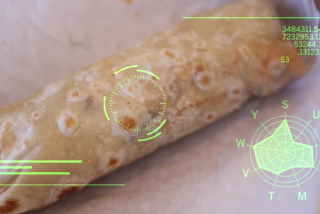
Video: Finding the recipe for the perfect burrito
2:09
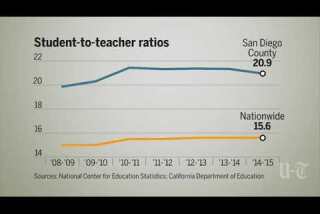
San Diego students have larger classes

Hierarchy of cuisine prices

Pay phones: Is that still a thing?

2016 border apprehensions

STD trends, San Diego County


